| |
|
|
|
|
English Family Quick Links
|
|
|
|

|
|
|
|
|
Family 9: Vintner Mare
 |
VIEW DESCENT CHART
All that is known of this mare is from a memorandum of Mr. Crofts to the effect that he had himself seen her, that she was the property of Mr. Curwen of Workington, and was the best bred as well as the best runner of her day in the North. She was a brood mare before running. As Mr Crofts does not say so, she was probably not a natural Barb or Arabian, but very likely from The Lowther Stud, the Lowther family having for generations imported Eastern blood, and bred many good horses.
We now know, however, from the research of C.M. Prior and the publishing of early breeder Cuthbert Routh's stud book (1694-1752) in Early Records of the Thoroughbred Horse [London: The Sportsman Office, 1924], that the Vintner mare was a daughter of Henry Curwen's Arabian, and was black in color, although we still do not know her dam's name or breeding. She probably dates to the reign of Charles II (1660-1685), most likely some time in the 1670s.
The Curwen family had long been established at Workington Hall, Cumberland, which, during the lifetime of the Vintner mare, was a castellated structure dating back prior to 1379 (it was remodeled in the mid 18th century by Carr of York, grounds by White of Redford). Situated near the sea, it was here Mary, Queen of Scots, first landed on her flight from Scotland and the "sanctuary" she believed her cousin, Queen Elizabeth offered, and it was the Curwen family who hosted her on her first step toward imprisonment and eventual execution, although none foresaw that at the time.
As might be gathered from the hospitable welcome the family gave Queen Mary in the 1560s, the Curwen family was staunchly Roman Catholic, and, in the late seventeenth and early eighteenth centuries, like their fellow co-religionists, were prohibited from owning horses valued over £5 by an Act of Parliament. Prior presents some evidence provided to him by a Curwen descendent, that Henry Curwen's friend and fellow horse-breeder, Charles Pelham, of Brocklesby Park, Lincolnshire, became the owner, probably only in name, of some of Curwen's more valuable stock. According to J.B. Robertson ["Origin of the Thoroughbred" in Flat Racing, Lonsdale Library Vol. XXVIII, London: J.B. Lippincott Company], Curwen followed James II to France, following his abdication in 1688, and remained there until 1698, during which time his cousin, who was administering his estates, dispersed his stud. The Vintner Mare and her daughter by the White-Legged Lowther Barb were placed in Pelham's charge.
When Curwen returned to England in 1698 he brought two barbs back with him from the court of Louis XIV; the horses had been presented to Louis XIV by the King of Morocco and were obtained for Curwen with the help of the Sun King's two illegitimate sons, both avid horsemen, the Counts of Byram and Toulouse. The Thoulouse barb was sold to Sir John Parsons, and Curwen kept the smaller, blazed-faced bay barb, who became known as the Curwen or Pelham Bay Barb, and whose daughters are responsible for carrying the Vintner mare's line forward. Curwen may also have brought back an Arabian mare in this period, an ancestress of the Alcock Arabian Mare, dam of the racing colts Whitefoot and Dismal.
As late as 1720, Curwen complained in a letter to Lord Carlisle that he was "being persecuted by certain persons for being a Papist, and would be compelled to sell 'a great many handsome horses." In this he was like another important early breeder of thoroughbreds, the Roman Catholic Richard Minshull of Buckingham, who earlier, in 1697, had had "a set of fine horses" seized by the government , "they being above ye vallue of £5." Minshull was, later, the owner of Mixbury [Minshull's] by the Curwen Bay Barb, noted in the descendant list below. Mixbury was described in the GSB as a "very highly formed galloway...only 13 hands 2 inches high, and yet there were not more than two horses of his time that could beat him, at light weights." One of his sisters, Frampton's Whiteneck ( distant ancestress of the American racehorse, Jamestown), was also a race horse, running at Newmarket between 1709 and 1711. |
Vintner Mare's Known Produce
f. by the White-Legged Lowther Barb, dam of
f. by Curwen/Pelham Old Spot, dam of
Mixbury (Minshull's), b.c. 1704 by Curwen Bay Barb
Brother to Mixbury (a.k.a. Monkey), c. by Curwen Bay Barb
f., Sister to Mixbury (Partner's dam) by Curwen Bay Barb
f., Sister to Mixbury (Sloven's dam) by Curwen Bay Barb
Whiteneck (Frampton's), f. by Curwen Bay Barb
f. by Pulleine's Arabian, dam of
f. by Blossom (Son of Curwen Bay Barb)
|
|
|
FAMILY #9 NOTABLE DESCENDANTS
|
|
Family #9 Oaks Winners
|
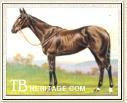 | 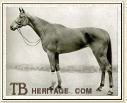 |
| Chatelaine | Asmena |
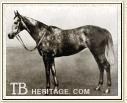 | 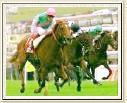 |
| Petite Etoile | Reams of Verse
Image Courtesy Steve Parrott |
|
1789 TAG b.f. 1786
(Trentham - Venus) |
1830 VARIATION b.f. 1827
(Bustard - Johannah Southcote) |
1895 LA SAGESSE b.f. 1892
(Wisdom - Saint Mary) |
1933 CHATELAINE b.f. 1930
(Phalaris - Herself) |
1941 COMMOTION b.f. 1938
(Mieuxce - Riot) |
1950 ASMENA ch.f. 1947
(Goya - Astronomie) |
1959 PETITE ETOILE gr.f. 1956
(Petition - Star of Iran) |
1976 PAWNEESE b.f. 1973
(Carvin - Plencia) |
1985 OH SO SHARP ch.f. 1982
(Kris - Oh So Fair) |
1997 REAMS OF VERSE ch.f. 1994
(Nureyev - Modena) |
| |
Family #9 Derby Winners
|
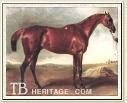 | 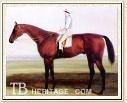 |
| St. Giles | Bloomsbury |
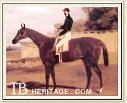 | 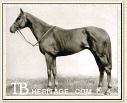 |
| Daniel O'Rourke | Galcador |
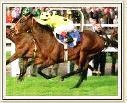 | |
High Rise
Image Courtesy Steve Parrott | |
|
1786 NOBLE b.c. 1783
(Highflyer - Brim) |
1824 CEDRIC ch.c. 1821
(Phantom - mare by Walton) |
1832 ST. GILES ch.c. 1829
(Tramp - Arcot Lass) |
1839 BLOOMSBURY b.c. 1836
(Mulatto - Arcot Lass) |
1852 DANIEL O'ROURKE ch.c. 1849
(Birdcatcher - Forget-Me-Not) |
1936 MAHMOUD gr.c. 1933
(Blenheim - Mah Mahal) |
1950 GALCADOR ch.c. 1947
(Djebel - Pharyva) |
1981 SHERGAR b.c. 1978
(Great Nephew - Sharmeen)
| |
1997 BENNY THE DIP b/br.c. 1994
(Silver Hawk - Rascal Rascal) |
1998 HIGH RISE b.c. 1995
(High Estate - High Tern)
| |
2001 GALILEO b.c. 1998
(Sadler's Wells - Urban Sea)
| |
2009 SEA THE STARS b.c. 2006
(Cape Cross - Urban Sea)
| |
|
|
Family #9 St. Leger Winners
|
|
|
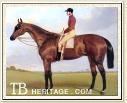 | 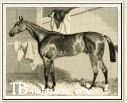 |
| Nutwith | Warlock |
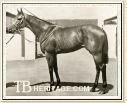 | 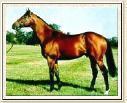 |
| Ragusa | Shantou
Image Courtesy Besnate |
|
1778 HOLLANDAISE gr.f. 1775
(Matchem - Virago) |
1781 SERINA b.f. 1778
(Goldfinder - mare by Squirrel) |
1803 REMEMBRANCER b.c. 1800
(Pipator - Queen Mab) |
1843 NUTWITH b.c. 1840
(Tomboy - mare by Comus) |
1856 WARLOCK b.c. 1853
(Birdcatcher - Elphine) |
1887 KILWARLIN br.c. 1884
(Arbitrator - Hasty Girl)
| |
1863 RAGUSA b.c. 1960
(Ribot - Fantan) |
1985 OH SO SHARP ch.f. 1982
(Kris - Oh So Fair) |
1996 SHANTOU b.c. 1993
(Alleged - Shaima) |
|
|
Family #9 Other Family Members
|
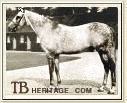 | | Abernant |
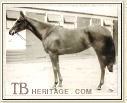 | | Americus Girl |
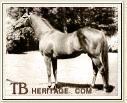 | | Aristophanes |
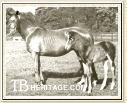 | | Astrology |
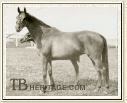 | | Astronomie |
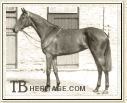 | | Ballynash |
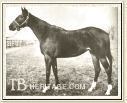 | | Blue Delight |
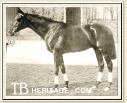 | | Bendigo |
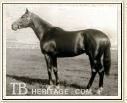 | | Bull Lea |
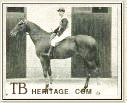 | | Cyllene |
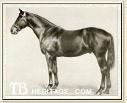 | | Dark Ronald |
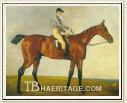 | | Dick Andrews |
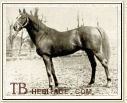 | | Fair Play |
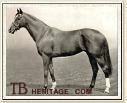 | | Fair Trial |
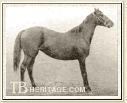 | | Fairy Gold |
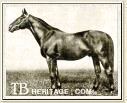 | | Friar Rock |
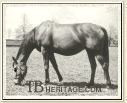 | | Hildene |
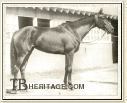 | | How |
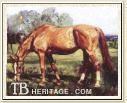 | | Lady Josephine |
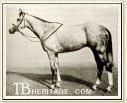 | | Mahmoud |
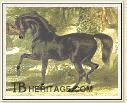 | | Muley Moloch |
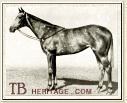 | | Mumtaz Mahal |
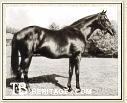 | | Nasrullah |
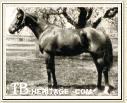 | | Princess Doreen |
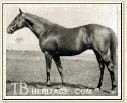 | | Sir Barton |
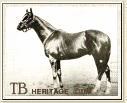 | | Star Shoot |
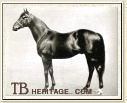 | | Tudor Minstrel |
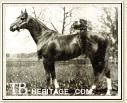 | | Upset |
|
Abernant gr.c. 1946
(Owen Tudor - Rustom Mahal)
One of the fastest and most popular horses in England's post-war years, he won 14 of his 17 races, ages 2 to 4, including the July Cup, the King George Stakes and the Nunthorpe Stakes, losing the 2,000 Guineas by a short head. Handsome and kind, he had a long and successful stud career, living to age 24. He transmitted his speed to many of his sons and daughters, including Zarco, Abelia, Favorita, and Gwen. His daughters produced the 1,000 Guineas winners Caergwrle and Humble Duty. |
Americus Girl ch.f. 1905
(Americus (Rey del Carreras) - Palotta )
Very fast filly won 5 of her 6 starts at 2, including the National Produce Stakes, the Phoenix Plate and the Drogheda Memorial Stakes; at 3 won the May Plate, the Royal Stakes and the Fern Hill Stakes, placing second in the Irish Oaks while conceding 26 pounds to the winner. Through her imported sire, she brought the blood of Lexington to England and transmitted it to future speedy generations through daughter Lady Josephine (see below). |
Alydar ch.c. 1975
(Raise A Native - Sweet Tooth)
Game, quiet colt won 14 (10 times second) of 26 races between the ages of 2 and 4, including Great American Stakes, Blue Grass Stakes, Whitney Stakes. Beaten by his generational rival, Affirmed, 8 times in prestigious stakes, second to him in the Kentucky Derby, the Preakness and the Belmont. Suffered what many consider a suspicious death in 1990. Leading sire of 2 year olds in the U.S., his many successful offspring include Strike the Gold, Easy Goer, Criminal Type, Alysheba.
| |
Aristophanes ch.c. 1948
(Hyperion - Commotion)
A big, handsome horse who was a top handicapper--winner of the Doncaster Handicap twice, among others-- and also won the Arlington and Scarbrough Stakes in his 4 racing seasons. Sent to Argentina in 1953, he was Leading Sire there in 1960. Sired the top racehorse Forli.
| |
Astrology ch.f. 1887
(Hermit - Stella)
Important link in Family 9, she ran only as a juvenile, her best placing a third in the Molyneux Stakes. In the Irish Eyrefield Stud of Eustace Loder, she produced the wind-affected Starshoot, who later was purchased to the U.S. and became a five-time leading sire there. She also foaled Telescope, a minor stakes winner. Her daughters proved excellent producers, with L'Etoile (1902, by Isinglass) dam of good French runner and sire Ecouen and tail-female ancestress of Easton. Another daughter, Saint Celestra, produced French Oaks winner Saint Astra, dam of Poule d'Essai des Pouliches winner Diavolezza, later dam of good French runners and tail-female ancestress of Prince Chevalier, Pharly, Soviet Star and other top runners. Saint Astra was also second dam of the great French runner and sire Asterus. Other Astrology descendants included Fastnet and Gossip.
| |
Astronomie b.f. 1932
(Asterus - Likka)
Winner of the Prix de St. Firmin and Chloe in her ten starts between ages two and four, in Marcel Boussac's powerhouse Fresnay le Buffard stud she became one of the best ever producers in France, with stellar performers by different sires. Dam of top stayers Caracalla II (by Tourbillon, winner of Ascot Gold Cup, Grand Prix de Paris, Prix de l'Arc de Triomphe, and others); Arbar (by Djebel, winner of Ascot Gold Cup, King George VI Stakes and others); Marsayas II (by Trimdon, winner of Goodwood Cup, Doncaster Cup, French St. Leger and others); Asmena (English Oaks Stakes); Astral, a winner in Belgium; Arbele (Prix d'Ispahan and others); Floriados (Prix Hocquart and others). Daughter Asmena (by Goya) produced Jockey Club Stakes winner Kurun (by Whirlaway), and daughters Arbele (by Djebel) and White Rose (by Goya) bred on.
| |
Ballynash b.f. 1946
(Nasrullah - Ballywellbroke)
Overgrown Irish-bred juvenile still won 2 of her 4 races that year, but failed to place in any of her six races as a three year old. Sold to France at age six, she became an outstanding broodmare, dam of six winners, including Montaval, winner of the King George and Queen Elizabeth Stakes; Mourne, winner of the Prix Daphnis and two other races before cracking his sesamoid and later sire of Snob, a leading sire in France; Moutiers, winner of the Prix Daru and two other races, later sire in Japan. In tail-female Ballynash was third dam of the great French race filly and French Oaks winner Pawneese and of her winning half-sister Petroleuse.
| |
Bendigo dk.br.c. 1880
(Ben Battle - Hasty Girl)
Quiet and apparently unflappable, he was all business on the track, during his 6 seasons of racing. Won the Champion Stakes, Cambridgeshire Stakes, Hardwicke Stakes, Eclipse Stakes, among others. Sired Benbecula, Black Cherry, Melba II.
| |
Blue Delight br.f. 1938
(Blue Larkspur - Chicleight)
Big filly, over 16 hands, with long stride, very fast winner of good races as a juvenile, and went on to win 10 races and place 9 times in 24 starts in her career through age 4, despite a problem fetlock, including Arlington Matron Stakes and Cinderella Handicap. Produced some excellent daughters, including Real Delight (1949, by Bull Lea), winner of CCA Oaks, Kentucky Oaks and other races and tail-female ancestress of Preakness winner Codex, CCA Oaks winner Our Mims, and the great Alydar. Other daughters included Bubbley (1950, by Bull Lea), winner of the Kentucky Oaks and a producer, and Princess Thuria (1953, by Heliopolis), another winner of the Kentucky Oaks and dam of Kentucky Derby and Preakness Stakes winner Forward Pass.
| |
Bull Lea dk.br.c. 1935
(Bull Dog - Rose Leaves)
Muscular and deep, like his sire, he won 10 of his 27 races between the ages of 2 and 4, including the Pimlico Handicap, the Widener Handicap, the Kenner Stakes, and placed second seven times. An enormous success at stud, Leading Sire in the U.S. 5 times and Leading Sire of Broodmares 4 times. His many successful offspring included Citation, Coaltown, Hill Gail, Iron Liege, and the excellent race mares and producers Twilight Tear and Two Lea. |
Covertcoat b.g. 1906
(Hackler - Cinnamon)
Winner of the 1913 Grand National Steeplechase at Aintree, in which only three in a field of 22 finished. His dam was from an Irish chasing family developed by Irish breeder J.J. Maher (who also bred Derby winner Manna); his half-sister, Ballymacarny, produced Ballymacad, the winner of the 1917 "Wartime" Grand National.
| |
Cyllene ch.c. 1895
(Bona Vista - Arcadia)
An elegant colt who won 9 of his 11 starts, including the Jockey Club Stakes, the Ascot Gold Cup, and the Newmarket Stakes. He did not compete in the classic races, but he sired 4 winners of the Derby. Leading Sire in England in 1909 and 1910 and Leading Sire of Broodmares in 1921. Sent to Argentina, where he headed the Leading Sire list in 1913. Offspring included Bridge of Earn, Captivation, Cicero, Cylgad, Lemberg, Minoru, Polymelus, Tagalie. |
Dark Ronald b/br. 1905
(Bay Ronald - Darkie)
Ran once at 2, winning the Hurst Park Foal Plate, then broke down, not running again until age 4, when he won 4 races, including the Princess of Wales's Stakes and the Ascot Royal Hunt Cup. After 3 seasons at stud in England (getting the significant sire Son-in-Law, Dark Legend, Ambassador IV, Magpie, Popingaol (dam of Book Law) and Brown Prince II) he was exported to Germany, where he was Leading Sire five times. His German offspring included Prunus, winner of the German 2,000 Guineas and German St. Leger, and Pink Flower. Dark Ronald is seen in a number of sporthorse pedigrees, primarily through Son-in-Law and Prunus. |
Dick Andrews b.c. 1797
(Joe Andrews - mare by Highflyer)
Very good, stout and fast stayer, winner of four-mile plates, and beating St. Leger winner Quiz in a match. Sired three classic winners, Cwrw, Manuella, and Altisidora, with Manuella becoming an outstanding broodmare, dam of St. Leger winner Memnon and sires Belzoni and Belshazzar, and daughters that bred on. Dick Andrews also got Tramp, a great four-mile horse, and later sire of five classic winners, of the influential sire Lottery, and of Trampoline, the dam of Glencoe. |
Hildene b.f. 1938
(Bubbling Over - Fancy Racket)
Influential American matron was unraced and had a weak female line in the previous three generations. Produced big youngsters: son Mangohick was a good sprinter, but it was son Hill Prince (by Princequillo), 1950 "Horse of the Year" (winner of the Preakness Stakes and at distances up to the 2 mile Jockey Club Gold Cup) who demonstrated her worth as a broodmare. Her son First Landing (a top juvenile in the U.S.) later sired Riva Ridge. Her daughter Satsuma (by Bossuet) produced the top three year old filly Cicada (1959), winner of the Acorn Stakes, Gardenia Stakes, Kentucky Oaks and other important races. Another daughter, First Flush, was dam of Sorority Stakes winner Bold Experience, from whom descended Wood Memorial Stakes winner Upper Case, Hopeful Stakes winner Crusader Sword and Flamingo Stakes winner and sire Cherokee Colony. |
Fair Play ch.c. 1905
(Hastings - Fairy Gold)
Classy-looking, but stubborn, winner of 10 of his 32 races, including the Dwyer Stakes, the Jockey Club Stakes, the Jerome Handicap, and the Brooklyn Derby. Leading sire in the U.S. three times, his offspring included Man O' War, Chance Play, Mad Hatter, Ladkin, Display, Cri De Coeur, among 47 other stakes winners. |
Fair Trial ch.c. 1932
(Fairway - Lady Juror)
Brave, strong and stylish, he won 7 of his 9 races, among them the Rous Memorial Stakes, the Queen Anne Stakes and the Longleat Stakes. Leading Sire in England in 1950, he had a number of successful offspring, including Palestine, Petition, Court Martial.
| |
Fairy Gold ch.f. 1896
(Bend Or - Dame Masham)
Extremely influential broodmare, won three races, including Epsom's Woodcote Stakes as a juvenile. In England, produced St. Lucre (1901), dam of the good French runner Zariba who later produced top runners Corrida, Goya II, Abjer, Goyescas and L'Esperance; also in England Fairy Gold produced top stayer Golden Measure. Purchased to the U.S., produced the excellent runner and leading sire Fair Play, stakes winner Flittergold (1911), the champion runner Friar Rock, and stakes winner Fair Gain. A sister to Fair Play, Golden View (1906) produced top stakes winner Rock View, and through daughter Golding was tail-female ancestress of stakes winners in the U.S.
| |
Friar Rock ch.c. 1913
(Rock Sand - Fairy Gold)
Sturdy horse with excellent feet and legs, sporting the black spots he acquired from his ancestor Pantaloon (and which he transmitted). Won at ages 2 and 3, including the Belmont Stakes, the Brooklyn Handicap and the Suburban Handicap. Known more as a broodmare sire of producers like Emotion, Friar's Carse (dam of War Kilt, War Relic, Speed Boat), Simpatica (Suntica). |
Goya II b.c. 1943
(Tourbillon - Zariba)
While he wasn't pretty, he was highly successful in the track in Germany, France and England, winning the Gimcrack Stakes, the St. James's Palace Stakes, the Prix des Sablons (twice), the Prix Boiard, and the Braune Band von Deutschland, among many other races. He stood at stud in France and America, getting Arrogate, Asmena, Nirgal, among others.
| |
How br.f. 1948
(Princequillo - The Squaw)
Good juvenile and 3 year old runner, winner of of the CCA Oaks, the Kentucky Oaks, and the Ladies Handicap, among others, mostly trained by Horatio Luro, who had also trained her sire during his career. Her daughter, Pocahontas (1955, by Roman) produced Preakness and American Derby winner and sire Tom Rolfe, Blandford Stakes winner Wenona, and other good runners. Her sister, Cherokee Rose, a CCA Oaks winner, was second dam of Ack Ack, and another sister, Sequoia, was dam of Santa Anita Derby winner Sham.
| |
Lady Josephine ch.f. 1912
(Sundridge - Americus Girl)
Second in the line of fast sprinting and top producing mares, she won 4 of her 5 starts at 2, including the Acorn Stakes, the Coventry Stakes, and Epsom's Tattenham Plate, and was rated as second-best of her generation. Started once, unsuccessfully, at 3. At the stud, she bred seven foals, including the excellent race mares and producers Lady Juror (dam of FairTrial, Jurisdiction, The Recorder, and Sansonnet) and Mumtaz Mahal (see below). |
Mahmoud gr.c. 1933
(Blenheim - Mah Mahal)
At the top of his generation at 2, with his "beautiful light action," he went on at 3 to win the Derby and was narrowly beaten by a short head in the 2,000 Guineas. Retired to stud at 4, he was sold to the U.S. after 4 seasons, leaving 1,000 Guineas and Irish Oaks winner Majideh and several other good winners in England. In the U.S. became a significant sire, at or near the top of the Leading Sires list several times, siring Oil Capitol, First Flight, Mount Marcy and a number of productive daughters, such as Boudoir II, Grey Flight, and Donatella III. |
Migoli gr.c. 1944
(Bois Roussel - Mah Iran)
Impressive winner of 11 out of 21 races from 2 to 4, including the Craven Stakes, King Edward VII Stakes and Aintree Derby, placing second in the Derby and third in the St. Leger. At 4 he won the Prix de l"Arc de Triomphe, among other races. Sired 24 stakes winners from 310 foals, including Gallant Man, Yasmin, Migolette.
| |
Mirza II gr.c. 1935
(Blenheim - Mumtaz Mahal)
Another speedy sprinting son from this family, he won 5 of his 7 starts at 2, including the July Stakes, Conventry Stakes and Lavant Stakes, and at 3 won the Greenham Plate, coming in third for the 2,000 Guineas. After retiring to stud, he was sent to France in 1939, taken to Germany as a "prize of war" the following year, and was finally returned to France in 1946. His progeny include Traumerei, Skylarking, Noria.
| |
Muley Moloch br.c. 1830
(Muley - Nancy)
Won the important Champagne Stakes at age 2; his most important offspring was daughter Alice Hawthorn, who won over 50 of 70 plus starts, ages 3 to 7, and in the stud produced Derby winner Thormanby. |
Mumtaz Mahal gr.f. 1921
(The Tetrarach - Lady Josephine)
Lived up to her bred-for-speed pedigree, third generation of a very fast dam line and daughter of the very speedy The Tetrarch, she was popularly called The Flying Filly. Won 5 of her 6 juvenile races--in the Queen Mary Stakes at Ascot she won by ten lengths "without being out of a canter." At 3 she won the King George Stakes and Nunthorpe Stakes, placing second in the 1,000 Guineas. Considered by many turf writers to have excellent conformation, quality and movement, she is a recognized source of speed in modern thoroughbreds. Dam of top racehorses and producing daughters, including Badruddin, Mirza II, Furrokh Siyar, Mah Mahal (dam of Mahmoud, Mah Iran), Rustom Mahal (dam of Abernant), Nizami (dam of Poetess II) and Mumtaz Begum (dam of Nasrullah, Rivaz, Malindi, Bibibeg, Sun Princess). |
Nasrullah b.c. 1940
(Nearco - Mumtaz Begum)
Known for his strong personality--a contemporary commentator called him "notoriously temperamental and cantakerous"-- he won 5 of his 10 races at 2 and 3, some of his losses attributed to his willfullness, or perhaps loss of heart. Wins included such races as the Conventry Stakes and the Champion Stakes, but he failed to place in the 2,000 Guineas, the New St. Leger, and was third in the New Derby Stakes (he ran during World War II). Despite this, he was a sire of immense influence, Leading Sire in England prior to export to the U.S. in 1951 and Leading Sire there 5 times. Some of his important progeny include Bold Ruler, Nashua, Fleet Nasrullah, Grey Sovereign, Indian Hemp, Jaipur, Musidora, Nantallah, Belle of All, Never Bend, Nearula, Red God, Pied D'Or, Noor, Never Say Die. |
Princess Doreen b.f. 1921
(Spanish Prince - Lady Doreen)
Long-running, hard-knocking filly raced to age 7, winning 34 of her 94 starts. Her victories included the Kentucky Oaks, the Covington Handicap (twice), the Independence Handicap (twice), the Latonia Autumn Handicap, the Saratoga Handicap and the Greater Chicago Handicap. She retired to produce 8 racing foals, 4 of whom were winners; ancestress of the 1979 colt Caller I.D.
| |
Royal Charger liv.ch.c. 1942
(Nearco - Sun Princess)
Inclined to be temperamental, like his relative and close contemporary, Nasrullah, he ran from ages 2 to 4, winning the Challenge Stakes, the Ayr Gold Cup, and 4 other races. Stood at the Irish National Stud for several seasons, where he got Happy Laughter, Turn To, Royal Serenade and Royal Challenger, among others. He was sold to the U.S. in 1953, where he became an important sire, with such offspring as Finnegan, Gay Hostess, Royal Orbit.
| |
Seaman b.g. 1876
(Xenophon - Lena Rivers)
Winner of the snowy 1882 Grand National Steeplechase at Aintree, and other top chases. His dam's line of Family 9 also produced Wavelet's Pride, an influential steeplechase sire.
| |
Shergar b.c. 1978
(Great Nephew - Sharmeen)
Sweet-tempered, solid winner of the Derby (by 10 lengths), the Irish Sweeps Derby (4 lengths) the King George VI and Queen Elizabeth Stakes (4 lengths), the Chester Vase (12 lengths), in all 6 wins at ages 2 and 3. Sired only 35 foals prior to vanishing in a kidnapping, never to be heard of again.
| |
Sir Barton ch.c. 1916
(Star Shoot - Lady Sterling)
Little winner of the three big U.S. classics--the Triple Crown, in addition to the Withers Stakes, the Sratoga Handicap, Maryland Handicap and others. Only 15.2 1/2 hands and with a tendency to corpulence, he required hard work to keep fit. His dam, Lady Sterling, also produced Lady Doreen (see above) and Sir Martin, who was shipped to England to run in the classics but won the Coronation Cup and other top races there.) Sired 8 stakes winners from 218 foals. Ended his stud career as a Remount stallion, dying in Wyoming in 1937.
| |
Star Shoot ch.c. 1898
(Isinglass - Astrology)
A good 2 year old, he won the Hurst Park Foal Plate and two others, but became unsound in the wind and lost his only two races at three. Sold to the U.S. in 1901, he rapidly advanced to the top 20 leading sires list, staying there from 1908 to 1923, and heading it 5 times, and was the leading sire of 2 year olds 7 times. Offspring contributing to his top sire status included Sir Barton, Priscilla (dam of Jack High), Grey Lag, Audacious, Uncle (sire of Nimbus, Hildur, Helios, Rosebud, Uncle's Lassie). He had, and transmitted, shelly feet, and was blind his last few years at stud.
| |
Tudor Minstrel br.c. 1944
(Owen Tudor - Sansonnet)
Head-strong when racing, but tractable off-course, he was a brilliant racehorse up to a mile, unbeaten at 2 and winning the 2,000 Guineas, the Somerset Stakes, the Knights' Royal Stakes and St. James's Palace Stakes at 3. Sired 43 stakes winners from 480 foals, including Aimee, Sing Sing, Tomy Lee, Tudor Melody, Toro, What A Treat.
| |
Upset ch.c. 1917
(Whisk Broom II - Pankhurst)
Forever destined to be known as the only horse to have defeated Man o' War (Sanford Memorial, Saratoga), he also won the Latonia Derby and the Havre de Grace Handicap, and was second by a head in the Kentucky Derby. A handsome colt, known as a quick starter. Sired Rude Awakening, Misstep.
|
|
|
|
|
|
|
|

